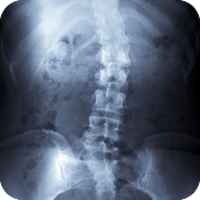Peak Experiences The American philosopher and naturalist Henry David Thoreau roamed far and wide over the hills and mountains of his native Massachusetts and neighboring New Hampshire. In his masterwork, "Walden," Thoreau famously stated that we must "reawaken and keep ourselves awake, not by mechanical
Read more
Chiropractic doctors practice natural, drugless, non-invasive health care and rely on the body's ability to self-heal. Sounds ideal, but just how does it work?
We look at the whole picture
Like other health-care providers, we follow a standard routine to gain information about the patient. We consult, review the case history, conduct a physical examination, and we may request laboratory analyses and/or x-rays. Unlike other health-care providers, however, chiropractic physicians also conduct a careful analysis of the patient's structure and pay particular attention to the spine. We also ask you about your life- Do you eat well? Exercise at all? How do you deal with stress? Do you have children? What do you do for work? And so on.
We seek the origin of the problem
Using this information, a diagnosis is made. Included in the diagnosis is the probable reason for your pain or discomfort. It is important to note that chiropractors seek the origin of the illness in order to eliminate it-we do not simply treat the symptoms. If your roof is leaking, do you simply catch the drips in a bucket for years on end, or do you repair the roof to prevent it from leaking? Similarly, if the migraine headache you've had all week is being caused by misaligned vertebra and an irritated nerve, do you continue to take pain killers indefinitely, or do you realign the vertebra to prevent the pain? You get the picture.
We fix the origin of the problem
Chiropractors have a term for misalignments: subluxations. A vertebral subluxation is a misalignment of the bones that protect the spinal cord. It's a leak in the roof. Or a kink in the wiring of your nervous system. The severity of the subluxation can vary, and there are a number of potential contributing factors that can be physical, emotional, mental, or chemical. The subluxation can be caused by any number of incidents, from birth trauma to an auto accident to simple repetition or over-use.
In this section, you will find articles on the mechanics of chiropractic care, its effects, and misconceptions.
-
Peak Experiences
-
Dynamic Warm-ups
In a common occurrence, you bend over to pick up the pencil you inadvertently dropped on the floor. Or you bend over to pick up the soap bar that has slipped through your fingers in the shower. Or you bend over to lift a bag of groceries out of your automobile trunk. These are all daily events. But on
Read more -
Summer Sports
Summer Sports In the summertime, everyone's thoughts turn to the outdoors. We want to get out in the sun and have some fun. Some people do exercise outdoors, such as running, walking, and biking, all year long regardless of the weather.1 For others, summer's warmer temperatures make activity outside
Read more -
Wellness Gardens
Wellness Gardens When time is spent in an office or indoors day in and day out, some can lose that connection to the outside world. And that loss of connection can lead to higher stress levels and more health ailments without even realizing it. But when that the gap between office life and outdoor life
Read more -
Smart Shoulders
Our shoulder joints have the greatest range of motion of any of the musculoskeletal joints in our bodies. The shoulder joint is really two joints, the glenohumeral joint between the arm bone (humerus) and the shoulder blade (scapula) and the acromioclavicular joint between the acromion (a bony projection off the scapula) and the collarbone (clavicle). The glenohumeral joint is a ball-and-socket joint and the acromioclavicular joint is a gliding joint.
Read more


